 In recent weeks as science blogs have gone careening across the URLs, new blog networks have formed, and bloggers hint about more changes to come, navel-gazing on the role of science blogging has become almost a full-time preoccupation for some of us. Even my non-blogger friends have been asking me about what is happening in the science blogosphere these days. This month’s Accretionary Wedge geoblog carnival topic seems particularly well-timed to turn some of this navel-gazing into writing, and maybe some of the writing into action.
In recent weeks as science blogs have gone careening across the URLs, new blog networks have formed, and bloggers hint about more changes to come, navel-gazing on the role of science blogging has become almost a full-time preoccupation for some of us. Even my non-blogger friends have been asking me about what is happening in the science blogosphere these days. This month’s Accretionary Wedge geoblog carnival topic seems particularly well-timed to turn some of this navel-gazing into writing, and maybe some of the writing into action.
Right now, I feel like geobloggers do a great job of connecting to each other, through reading and commenting on posts, sharing information and building camraderie on Twitter, and through combined feeds like Chris’s all-geo feed (see his post for more awesomeness to come). Geo Girl of Eat. Sleep. Geology. did a fantastic job of describing what it is like to be a member of this community.
I am awestruck by the level of camaraderie and openness that exists in the geoblogosphere and how it allows for communication of real geologic wonderment. The vast expanse of specialties, geographic representations, and experience available at your fingertips as part of the geoblogosphere is unfathomable. True geology is shared en masse and those of us with desk jobs in cube farms bask in the joys shared by the offshore and overseas bloggers, the field geologists, and the twittering TA’s. Perhaps the reverse is true, as the field geos are fighting off the cactus and the mosquitos. The opportunity to learn, share, and experience things beyond your own surroundings is a rich opportunity that shouldn’t be skipped.
But, as Geo Girl goes on to say, “the value of the geoblogosphere is greatly unrealized by those who are not a part of it.” One way to share the value of the geoblogosphere is to proselytize to anyone will listen about how their life would be so much richer if they just took up twitter and blogging….but I don’t think that’s necessarily the most effective way to expand our reach. Instead, I see ways that we can expand what we are doing, to make our community bolder, more inclusive, and more outwardly focused. Building that sort of community allows us not just to provide camaraderie and support for one another, but also to act as agents of change beyond the borders of the internet.
Let me use three examples to explain what I mean, by showcasing what we are already doing and where I think we can go from here.
The ability of the geoblogospheric community to affect geoscience issues in the real world, by raising awareness and promoting action has recently been demonstrated with the California state rock, when what began as a blog and Twitter groundswell expanded to op-ed pages throughout the state and news stories in media outlets around the country. When the next challenge comes along, whether it’s in the form of ridiculous rumours about methane tsunamis, lack of reporting on an unfolding natural disaster, or construing volcano monitoring as political pork, will the geoblogospheric community draw on the strategies and resources it has developed to effectively work together to get the word out beyond our blog readers? Should we each be developing continuing relationships with science journalists at our local papers or is there some collective form of action that is more effective for countering geologic misinformation? Will developing alliances with our professional organizations like AGU and GSA enhance the credibility of the geoblogosphere when we do raise our voices? Of course, we might want to make a difference beyond just countering geologic misinformation. Jess Ball at Magma Cum Laude has partnered with the International Volcano Monitoring Fund to raise money for badly-needed instrumentation at Santiaguito in Guatemala. What can the rest of us being doing to help her efforts, and what other ways can we use our blogs to directly impact the collection of geologic data? Is there a geoscience equivalent of things like Project Budbreak, a citizen science phenology project and CoCoRaHS, the community collaborative rain, hail, and snow network, that we could engage with, encourage our readers to participate in, or even dream up and create ourselves? (Yes, there’s Did You Feel It? but some of us don’t live on active plate boundaries.)
For the past few years, science bloggers have participated in the DonorsChoose social media challenge. Last year, a combined geoblogger effort netted $9663 for earth science education in US public schools. Science blogging participation in that drive has been spearheaded on ScienceBlogs by the indefatigable Janet Stemwedel, but as the ocean bloggers showed us last year, you don’t have to have a brand name attached to your blog in order to participate and make an impact. For American geo-types, the DonorsChoose challenge is perfectly timed to coincide with Earth Science Week, making October a perfect month to catalyze our on-line and off-line outreach and education efforts aimed at the next generation of earth scientists. I’m willing to organize a DonorsChoose challenge this October, but I’d love to have help from other geobloggers in making it a success. But DonorsChoose, with its explicitly US focus, leaves out a lot of our community. What are the opportunities to engage with global earth science education efforts? Can we use something like the UK’s National Science and Engineering Week in March or the European Geosciences Union meeting in April to create a time to focus on earth science education outside the US? Is using our bloggy megaphones to raise money even the best use of our collective resources, or is there a more effective strategy to use our internet presence and community to make an on-the-ground, in-the-classroom difference in earth science education?
I think the geoblogospheric community is a largely untapped resource for recruiting, mentoring, and retaining a diverse geoscience profession. We have now voices of women and men from around the world, in industry, academia, and government. We have people who write about rocks, sediments, tectonics, and floods. If we strengthened our ties with climate, meteorology, ocean, and space bloggers we could truly span the range of earth sciences. Put all of that together, and our community provides a fantastic window into the geoscience profession. Even though I’m a water person, I can learn a bit about what it’s like to work in exploration geology or what paleontologists are getting excited about these days. And, as someone who advises undergraduate and graduate students with a range of professional aspirations, I can point students blogs relevant to their interests. Considering going to grad school? Check out Magma Cum Laude, Harmonic Tremors, or Musings of a Life-long Scholar. Thinking about environmental consulting? Check out Accidental Remediation. From those blogs, students can get far more insight into what their potential futures might look like than they can from my cloistered academic self. I think it would be even better if there were more choices out there for my students to read about careers outside academia. I know that there are, understandably, restrictions on what government and industry employees can blog about and that because of those fears there is a higher barrier to entry for potential geobloggers beyond grad school and academia. In some ways, its an incredibly difficult problem to cultivate blogs that show the geoscience profession in industry and government in a meaningful and transparent fashion, but I am (naively?) optimistic that as the geoblogosphere continues to develop and engage with real-world efforts like citizen science and education projects, more employers will see the potential value of letting geoscientists blog. I guess I’m adopting a sort of “build it and they will come” approach, but I’d love to hear other suggestions. Beyond just diversity in employment sector, I think future geoscientists, and the geoblogospheric community itself, would benefit from greater diversity in faces – gender, ethnicity, nationality, and ability. Increasing diversity, without putting undue burden on minority geoscientists to add blogging to their already long list of obligations, is certainly a challenge, but as the geoblogospheric community finds ways to maximize its real-world impact and lower its barrier to entry, I am hopeful that our community will grow and diversify. Finally, I’d like to challenge those of us who write mostly about geoscience news and research, to dip our toes a bit more into the water of writing about the practice of geoscience and our lives as geoscientists. There is an incredibly wealth of blogging going on about lives in science (e.g., as aggregated in the Scientiae carnival), but much of it is heavily oriented towards the biomedical science fields. People contemplating careers in geosciences, looking for solidarity as they write their theses, or seeking advice as they write their first grant can benefit tremendously from this sort of blog reading (I know. I have.), but it’s harder to see the applicability when such writing tends about the intricacies of NIH scoring or experiments in neuropharmacology. It might be much scarier to write about the practice of science than to describe a pretty outcrop, but it does have value. One idea might be to describe what a typical work day is like for you, an idea which would actually be exhuming a long-buried geoblogospheric meme. I’ll commit to doing that in a few weeks when my fall classes begin. Will any of you join me? What else can we be doing to genuinely promote an inclusive and diverse geoblogospheric community?
As I see it, what we have in the geoblogosphere is an opportunity to create a really incredible community. We’ve got the seeds of it now, but I’d like to challenge us to make it more focused on using our talents, interests, and resources beyond the existing community of geobloggers and geoblog readers. If we do that, I think the geoblogospheric community can become an agent of change for our profession and make the sort of real-world difference that motivates many of us in our day-to-day actions.
![]() I’ve just spent the last few days travelling around western Scotland, with the furthest point I visited being the Scottish island of Islay.
I’ve just spent the last few days travelling around western Scotland, with the furthest point I visited being the Scottish island of Islay. 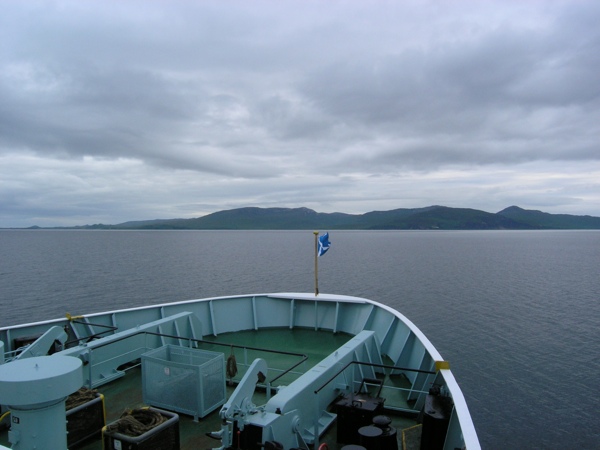
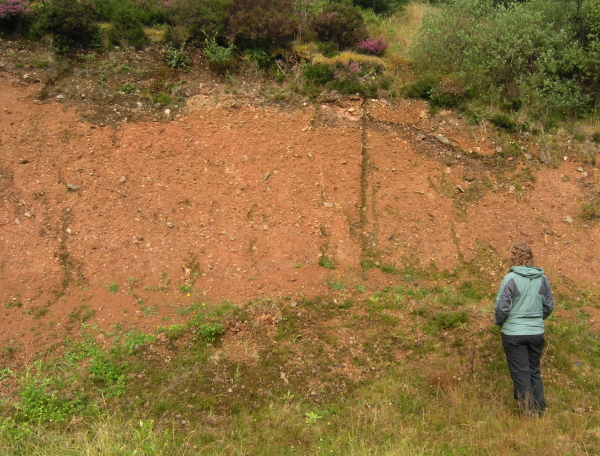
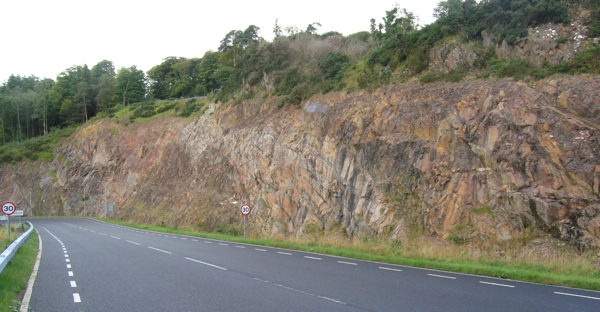
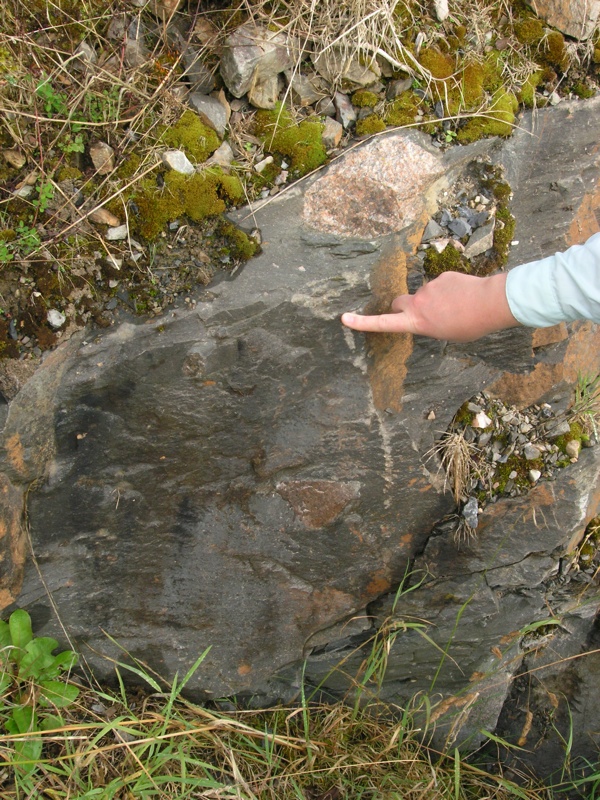



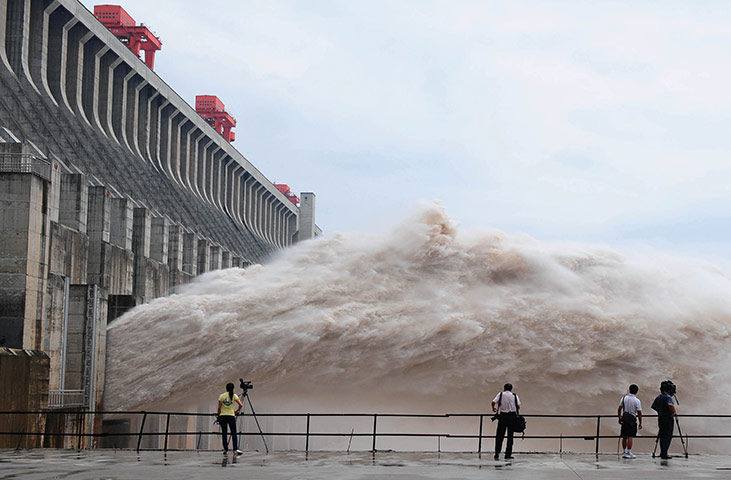


Geoblogospheric community. What is it good for?
Right now, I feel like geobloggers do a great job of connecting to each other, through reading and commenting on posts, sharing information and building camraderie on Twitter, and through combined feeds like Chris’s all-geo feed (see his post for more awesomeness to come). Geo Girl of Eat. Sleep. Geology. did a fantastic job of describing what it is like to be a member of this community.
But, as Geo Girl goes on to say, “the value of the geoblogosphere is greatly unrealized by those who are not a part of it.” One way to share the value of the geoblogosphere is to proselytize to anyone will listen about how their life would be so much richer if they just took up twitter and blogging….but I don’t think that’s necessarily the most effective way to expand our reach. Instead, I see ways that we can expand what we are doing, to make our community bolder, more inclusive, and more outwardly focused. Building that sort of community allows us not just to provide camaraderie and support for one another, but also to act as agents of change beyond the borders of the internet.
Let me use three examples to explain what I mean, by showcasing what we are already doing and where I think we can go from here.
The ability of the geoblogospheric community to affect geoscience issues in the real world, by raising awareness and promoting action has recently been demonstrated with the California state rock, when what began as a blog and Twitter groundswell expanded to op-ed pages throughout the state and news stories in media outlets around the country. When the next challenge comes along, whether it’s in the form of ridiculous rumours about methane tsunamis, lack of reporting on an unfolding natural disaster, or construing volcano monitoring as political pork, will the geoblogospheric community draw on the strategies and resources it has developed to effectively work together to get the word out beyond our blog readers? Should we each be developing continuing relationships with science journalists at our local papers or is there some collective form of action that is more effective for countering geologic misinformation? Will developing alliances with our professional organizations like AGU and GSA enhance the credibility of the geoblogosphere when we do raise our voices? Of course, we might want to make a difference beyond just countering geologic misinformation. Jess Ball at Magma Cum Laude has partnered with the International Volcano Monitoring Fund to raise money for badly-needed instrumentation at Santiaguito in Guatemala. What can the rest of us being doing to help her efforts, and what other ways can we use our blogs to directly impact the collection of geologic data? Is there a geoscience equivalent of things like Project Budbreak, a citizen science phenology project and CoCoRaHS, the community collaborative rain, hail, and snow network, that we could engage with, encourage our readers to participate in, or even dream up and create ourselves? (Yes, there’s Did You Feel It? but some of us don’t live on active plate boundaries.)
For the past few years, science bloggers have participated in the DonorsChoose social media challenge. Last year, a combined geoblogger effort netted $9663 for earth science education in US public schools. Science blogging participation in that drive has been spearheaded on ScienceBlogs by the indefatigable Janet Stemwedel, but as the ocean bloggers showed us last year, you don’t have to have a brand name attached to your blog in order to participate and make an impact. For American geo-types, the DonorsChoose challenge is perfectly timed to coincide with Earth Science Week, making October a perfect month to catalyze our on-line and off-line outreach and education efforts aimed at the next generation of earth scientists. I’m willing to organize a DonorsChoose challenge this October, but I’d love to have help from other geobloggers in making it a success. But DonorsChoose, with its explicitly US focus, leaves out a lot of our community. What are the opportunities to engage with global earth science education efforts? Can we use something like the UK’s National Science and Engineering Week in March or the European Geosciences Union meeting in April to create a time to focus on earth science education outside the US? Is using our bloggy megaphones to raise money even the best use of our collective resources, or is there a more effective strategy to use our internet presence and community to make an on-the-ground, in-the-classroom difference in earth science education?
I think the geoblogospheric community is a largely untapped resource for recruiting, mentoring, and retaining a diverse geoscience profession. We have now voices of women and men from around the world, in industry, academia, and government. We have people who write about rocks, sediments, tectonics, and floods. If we strengthened our ties with climate, meteorology, ocean, and space bloggers we could truly span the range of earth sciences. Put all of that together, and our community provides a fantastic window into the geoscience profession. Even though I’m a water person, I can learn a bit about what it’s like to work in exploration geology or what paleontologists are getting excited about these days. And, as someone who advises undergraduate and graduate students with a range of professional aspirations, I can point students blogs relevant to their interests. Considering going to grad school? Check out Magma Cum Laude, Harmonic Tremors, or Musings of a Life-long Scholar. Thinking about environmental consulting? Check out Accidental Remediation. From those blogs, students can get far more insight into what their potential futures might look like than they can from my cloistered academic self. I think it would be even better if there were more choices out there for my students to read about careers outside academia. I know that there are, understandably, restrictions on what government and industry employees can blog about and that because of those fears there is a higher barrier to entry for potential geobloggers beyond grad school and academia. In some ways, its an incredibly difficult problem to cultivate blogs that show the geoscience profession in industry and government in a meaningful and transparent fashion, but I am (naively?) optimistic that as the geoblogosphere continues to develop and engage with real-world efforts like citizen science and education projects, more employers will see the potential value of letting geoscientists blog. I guess I’m adopting a sort of “build it and they will come” approach, but I’d love to hear other suggestions. Beyond just diversity in employment sector, I think future geoscientists, and the geoblogospheric community itself, would benefit from greater diversity in faces – gender, ethnicity, nationality, and ability. Increasing diversity, without putting undue burden on minority geoscientists to add blogging to their already long list of obligations, is certainly a challenge, but as the geoblogospheric community finds ways to maximize its real-world impact and lower its barrier to entry, I am hopeful that our community will grow and diversify. Finally, I’d like to challenge those of us who write mostly about geoscience news and research, to dip our toes a bit more into the water of writing about the practice of geoscience and our lives as geoscientists. There is an incredibly wealth of blogging going on about lives in science (e.g., as aggregated in the Scientiae carnival), but much of it is heavily oriented towards the biomedical science fields. People contemplating careers in geosciences, looking for solidarity as they write their theses, or seeking advice as they write their first grant can benefit tremendously from this sort of blog reading (I know. I have.), but it’s harder to see the applicability when such writing tends about the intricacies of NIH scoring or experiments in neuropharmacology. It might be much scarier to write about the practice of science than to describe a pretty outcrop, but it does have value. One idea might be to describe what a typical work day is like for you, an idea which would actually be exhuming a long-buried geoblogospheric meme. I’ll commit to doing that in a few weeks when my fall classes begin. Will any of you join me? What else can we be doing to genuinely promote an inclusive and diverse geoblogospheric community?
As I see it, what we have in the geoblogosphere is an opportunity to create a really incredible community. We’ve got the seeds of it now, but I’d like to challenge us to make it more focused on using our talents, interests, and resources beyond the existing community of geobloggers and geoblog readers. If we do that, I think the geoblogospheric community can become an agent of change for our profession and make the sort of real-world difference that motivates many of us in our day-to-day actions.